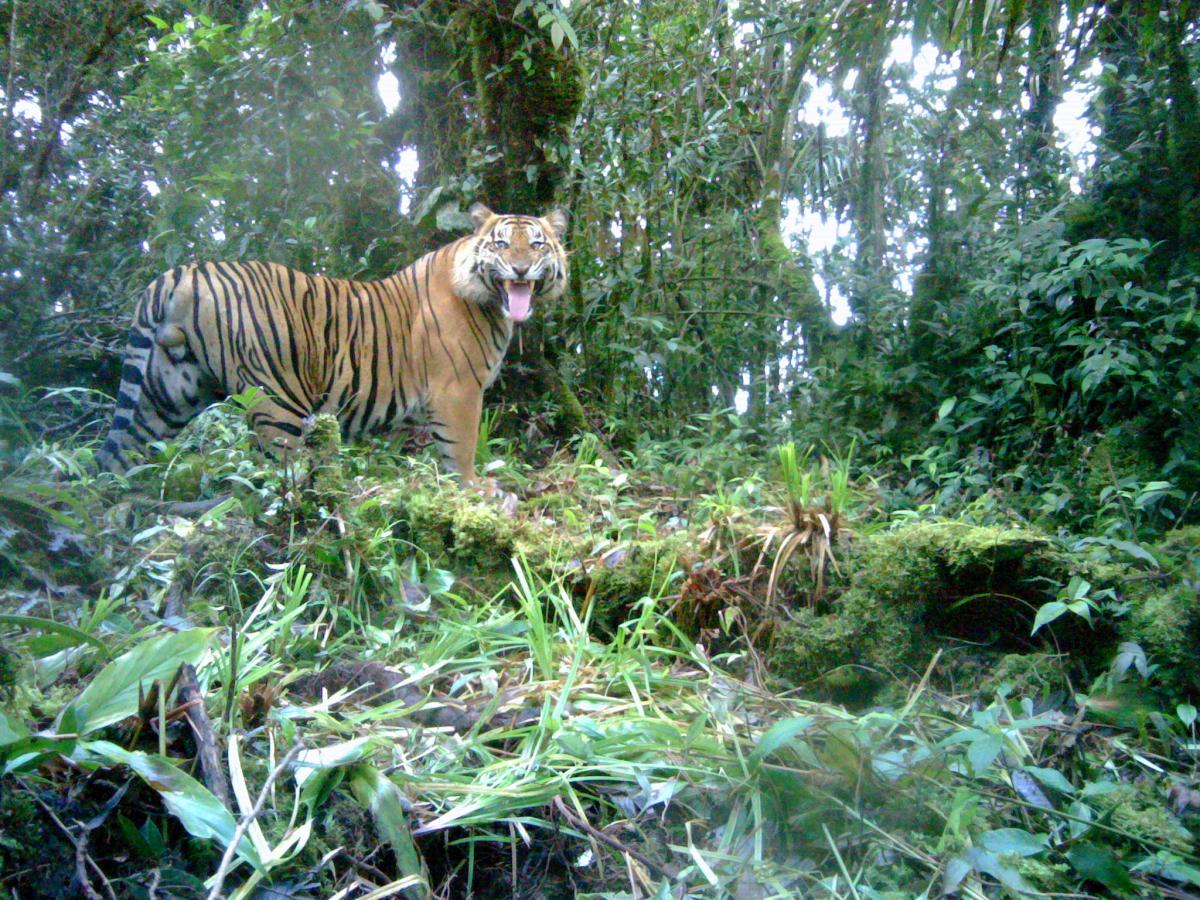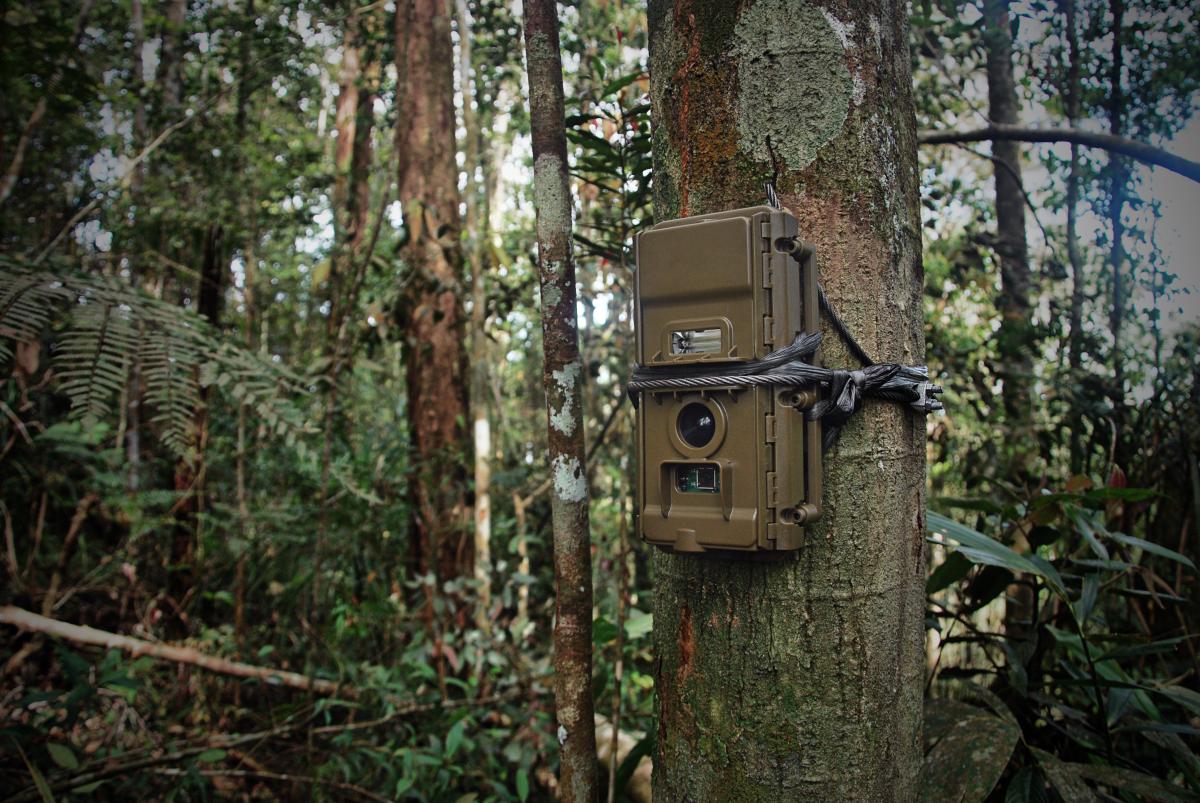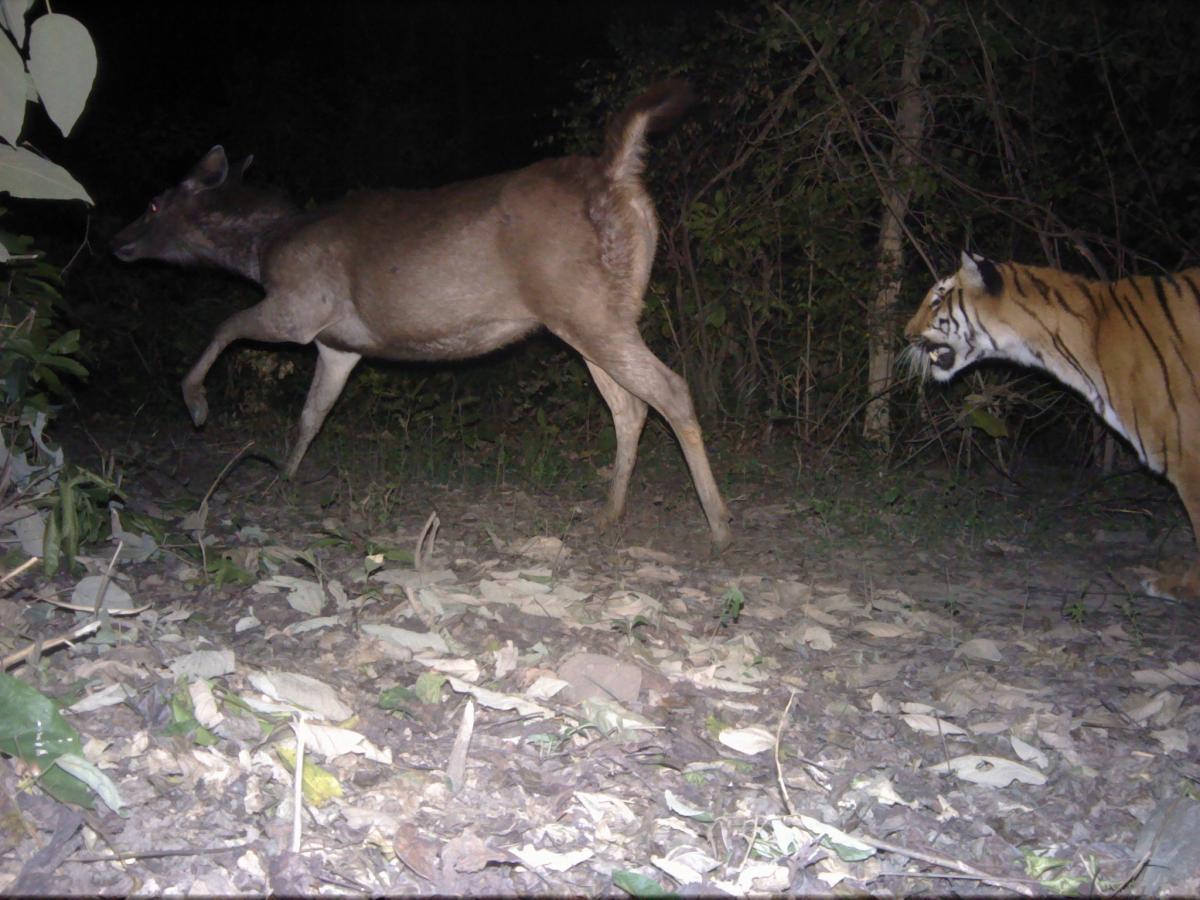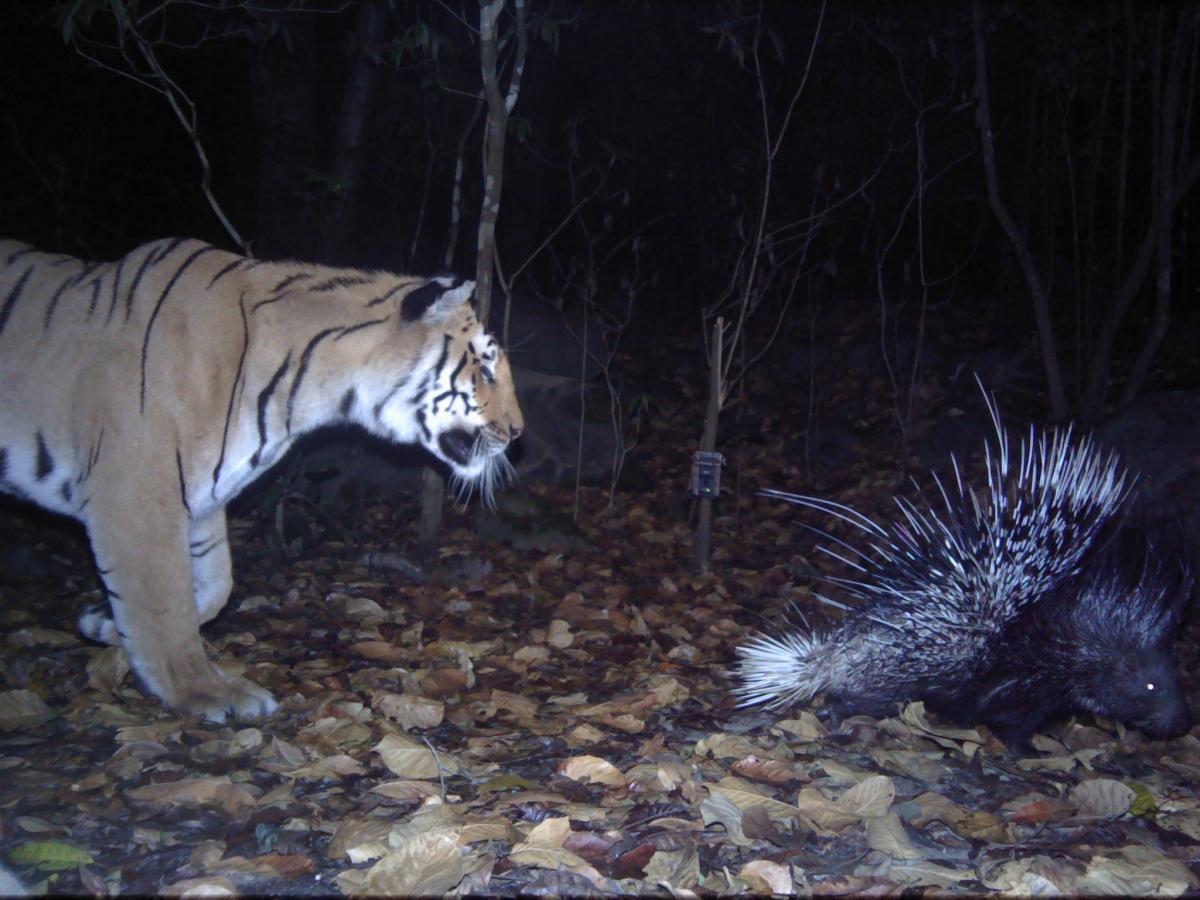Increasing tigers – the ultimate measure of conservation success
In tiger conservation, tiger populations are the currency of conservation success. If tiger numbers are increasing, we are doing our job well, but if numbers are declining, we need to work to understand the reasons for decline, and try new interventions. Sounds simple enough, but how do we keep track of such secretive animals that prowl some of densest, darkest, most rugged and remote parts of the earth? The answer lies in sophisticated mathematics, technology, and hard fieldwork.
First the mathematics: while there are different sophisticated mathematical approaches to counting tigers, they are all based on the same basic principle developed 120 years ago, called “capture-mark-recapture,” or just “capture-recapture.” The idea here is that a population can be estimated based on two sample periods during which animals are captured and marked in the first period. In the second sample period, animals are captured again, with some portion of them marked from the first sample. The proportion of marked animals in the second sample should be the same as that in the population being sampled, so the number of animals in the population can be estimated by dividing the total number of marked animals by the proportion of marked animals in the second sample. With tigers it is a little easier because we do not have to capture and mark them, rather, tiger stripe patterns are unique, like fingerprints, so in essence they are already marked and all we have to do is sample the population twice.
Next is the technology: we “capture” tigers with camera traps set in the forest on trails where tigers are likely to travel. The cameras have infrared sensors that trigger the camera whenever an animal walks by and are set in pairs to photograph both flanks of each tiger encountered. Thus, we can set cameras in the forest for a period of time, say 2 months, during which the first month is the capture period and the second month is the recapture period. The cameras must have long battery life, be absolutely weather proof, and have quick trigger times so the animal does not leave the frame before a picture is taken.
Another way of identifying tigers is through DNA that they leave behind in the forest, mostly in scats deposited on the ground and urine sprayed on trees and leaves. This method is less used because multiple fresh samples can be difficult to find, lab analyses are expensive, and some tiger range states do not have good labs available to process the samples.
Then the hard work: In well-developed parks, cameras are mostly set on roads accessed by vehicle, but in more remote areas, it requires weeks of arduous hiking through hundreds or even thousands of kilometers of dense, rugged jungles. Indeed, some sample points in Northern Sumatra take nearly two weeks to walk to. Obviously, this requires teams of incredibly fit individuals with good survival and navigation skills, but they also must understand tigers and be adept at finding the places tigers frequent.
This is how tiger numbers can be estimated in a site, but how do we count tigers over the more than one million square kilometres of tiger habitat? Setting camera traps over such vast areas is neither logistically feasible nor a good use of limited conservation dollars. Some argue that we can extrapolate tiger numbers to similar habitats to those where we have estimated their densities using camera traps, but this requires good estimates of factors that influence tiger density such as poaching pressure, prey density, habitat disturbance, forest edge effects, and roads etc. These factors can be as difficult and costly to measure as tiger numbers!
The better answer is that we do not need to know the world’s tiger population. Rather, it is sufficient to estimate tiger numbers in key sites throughout tiger range, called source sites. These are the places where tigers have the best chances of recovery, because there are enough breeding females and places to breed and feed, and are consequently the focus of conservation interventions. If tigers are doing well in these sites, we know that conservation is effective, the world’s tiger population is secure, and these sites will feed tigers into the surrounding landscapes. Such a sampling scheme would allow us to measure conservation effectiveness by tracking trends in tiger numbers, while putting the bulk of our conservation dollars into critical interventions such as preventing poaching and trade.
John Goodrich, Senior Director, Tiger Program, Panthera, 8 West 40th Street 18th floor, New York, NY
Antony Lynam, Conservationist and Regional Advisor, Center for Global Conservation, Wildlife Conservation Society, 2300 Southern Blvd, Bronx, NY








